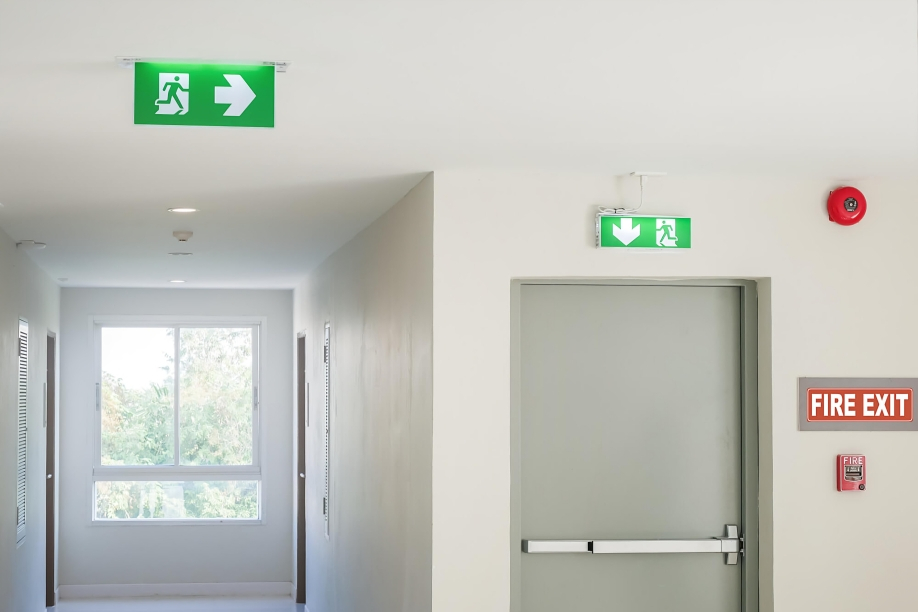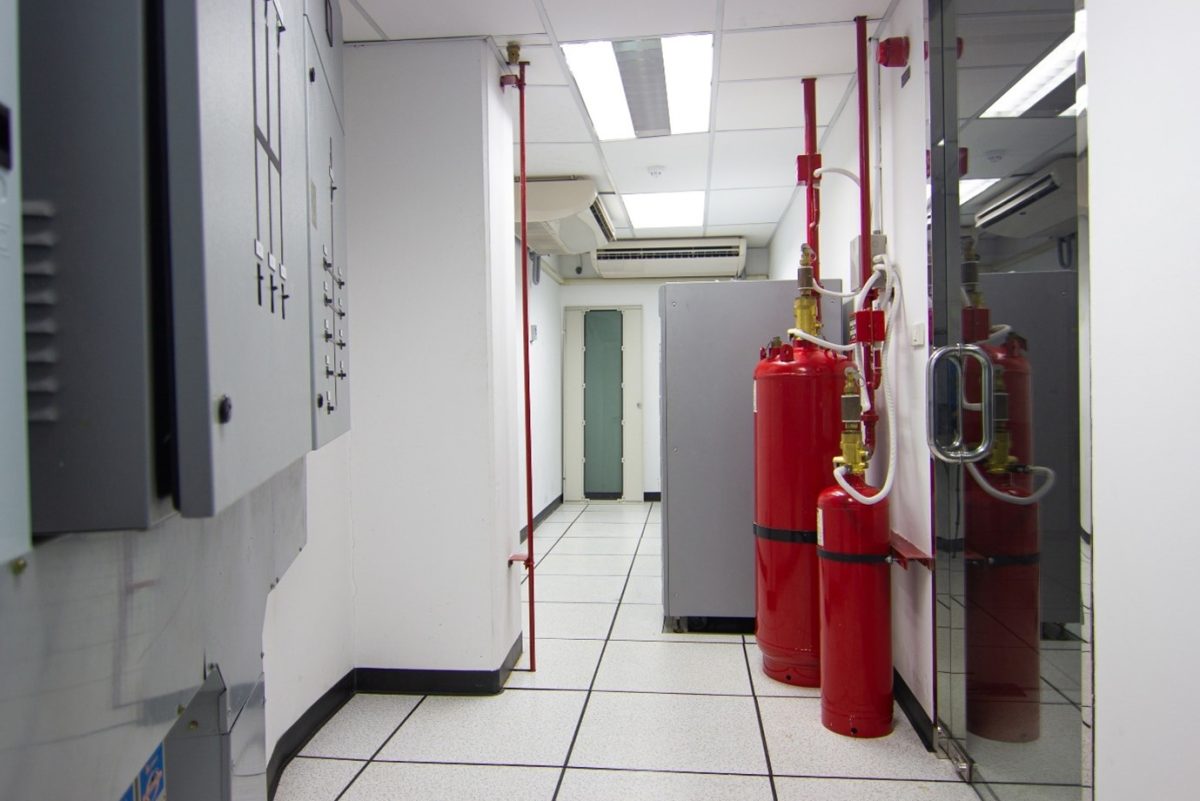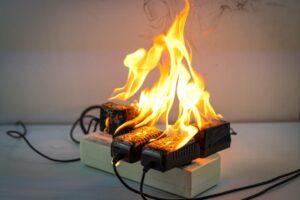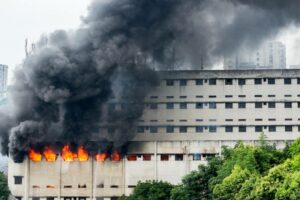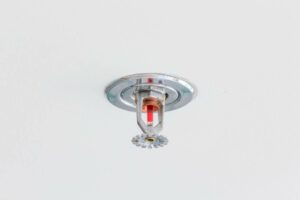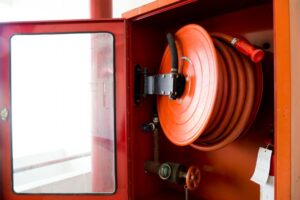Fire sprinkler vs fire suppression; what’s the difference? Many often find it challenging to differentiate between fire sprinkler and fire suppression systems because both serve the purpose of extinguishing fires.
However, these two systems function in distinct ways, and it is crucial to discern which fire protection system is most suitable for your premise.
Thus, it is advisable for you to consult a fire contractor before selecting a fire fighting system.
This article is intended to clarify the differences between these systems, explore the various types available, and where they should be installed.
Consequently, our aim is to provide you with the information you need to make an informed choice for your building’s specific fire protection requirements.
Fire Sprinkler vs Fire Suppression Systems: How Are They Different?

Fire Sprinkler System and Fire Suppression System
Understanding the differences between the two systems is compulsory for you to make an informed decision regarding your building’s specific fire protection needs.
First, both fire sprinkler and fire suppression systems have the same mission: to control and ultimately extinguish fires.
Having said that, the methods and substance used for achieving these goals vary significantly. For your convenience, we have created a table to provide a clear and concise comparison of these differences.
| Fire Sprinkler System | Differences | Fire Suppression System |
| Activates automatically when heat or flames are detected, spraying a spray of water particles directly onto the source of the fire. | Function | Puts out fires using various agents when they are activated, like carbon dioxide or inert gases. |
| Covers individual zones, such as: – Apartments – High-Rise Buildings – Offices – Restaurants – Hotels – Cinemas | Coverage Area and Location | Covers specific hazard areas, such as: – Server Rooms – Electrical Rooms (TNB Rooms) – Factories – Commercial Kitchens – Fast Food Restaurants |
| – Pre-Action Sprinklers – Wet Pipe Sprinklers – Dry Pipe Sprinklers – Deluge Sprinklers | Types of Systems | – CO₂ Systems – Wet Chemical Suppression – Inert Gas – FM200 Suppression |
| Varies in installation cost but is usually lower, depending on the building’s size. | Installation Cost | Typically requires a higher installation cost than fire sprinkler systems. |
What is a Fire Sprinkler System in Malaysia?

| Fire Sprinkler System | Description |
| Overview | Fire sprinkler systems are often the first line of defence when it comes to controlling fires. These systems discharge water via sprinkler heads activated by heat or smoke. |
| Effectiveness | They are effective against Class A fires, which involve ordinary combustibles such as: – Paper – Boxes & Parcels – Clothes & Apparel – Plastic |
| Types | Deluge Sprinklers – Feature always-open heads filled with water only when a fire is detected. – Ideal for high-hazard areas like chemical plants or aviation hangars. Dry Pipe Sprinklers – Suited for buildings in freezing climates. – Keep water out of pipes until system activation to prevent frozen burst pipes. Wet Pipe Sprinklers – Filled with water at all times, allowing for immediate response upon activation. – Commonly used in high-traffic commercial areas. Pre-Action Sprinklers – Rely on dual triggers and separate fire detection systems for activation. – Ideal for areas where accidental activation could be disastrous. |
Read More: Hose Reel Requirement in Malaysia Explained
What is a Fire Suppression System?

| Fire Suppression System | Description |
| Overview | Fire suppression systems come into play where water-based solutions may either be ineffective or damaging. They are typically activated by heat, smoke, or a combination of both. |
| Effectiveness | They excel in particular classes of fires, including: – Class B: Paint & Petrol (Flammable Liquids) – Class C: Deodorant & Aerosol Sprays (Flammable Gases) – Class D: Phones, Laptops & E-cigarettes (Flammable Metals/Batteries) – Class E: Electric Fires & Wires – Class F: Cooking Oils & Fats |
| Types | CO2 Systems – Leverage carbon dioxide’s quick suppressive abilities. – Not suitable for areas frequented by humans. – Often used in industrial settings. Wet Chemical Suppression – A system designed for kitchen fires involving cooking oils and fats. – Deploy a liquid agent that reacts to create a foam, suppressing the fire and preventing re-ignition. Inert Gas – Utilise two or more gases (such as nitrogen, argon, and carbon dioxide). – Safe for occupied spaces. – Leave no residue and electrically non-conductive. FM200 Suppression – Uses heptafluoropropane, also known as HFC-227ea. – No residue, non-toxic, and safe to use in occupied spaces. – Often used in mechanical rooms, server rooms and data centres. |
Read More: Smoke Curtain vs Fire Curtain: What’s the Difference?
Fire Sprinkler vs Fire Suppression Systems: How are They Used in Malaysia

Undoubtedly, choosing the right fire protection system for your building in Malaysia is not a decision to be taken lightly.
The stakes are high, not only in terms of property damage but also in the invaluable aspect of human safety. Hence, here’s a guide to help you make an informed decision.
| How to Choose the Right Fire Protection System | Description |
| Conduct a Risk Assessment | – Conduct a thorough risk assessment of your facility. – Identify potential fire hazards, materials, and specific zone needs. |
| Specialised Requirements | – Depending on your industry or building type, consider specialised requirements. – For example, industrial facilities that handle combustible materials may have different needs compared to a standard office building. |
| Evaluate the Building’s Layout | – Consider building size, number of floors, and layout. – Buildings with complex designs or special compartments may favour fire suppression systems. |
| Consider the Nature of Occupancy | – Determine if your building is residential, commercial, or industrial. – Residential spaces often use fire sprinklers, while industrial settings may need specialised fire suppression. |
| Budget Constraints | – While cost should never compromise safety, it is an essential aspect to consider. – Fire sprinkler systems are typically more cost-effective in terms of installation and maintenance. |
| Consult with Professionals | – Involve certified fire safety professionals. – They provide expertise in navigating fire safety standards, codes, and best practices, as well as compliance with BOMBA (Malaysian Fire and Rescue Department) regulations. |
| Perform a Cost-Benefit Analysis | – Consider long-term cost savings. – Fire sprinklers may have lower initial costs, but fire suppression systems can save more in the long run, especially for buildings with water-sensitive materials. |
Read More: Common Fire Risks at Warehouses & Distribution Centres
Fire Sprinkler vs Fire Suppression System: Final Comparison

In summary, fire sprinkler systems offer a versatile and cost-effective approach but might not be suitable for every environment.
On the other hand, fire suppression systems provide specialised solutions but at a potentially higher cost.
Therefore, when it comes to making your choice, consult experts and factor in the unique needs of your facility or building.
Palcon: Malaysia’s Leading Fire Safety System Provider
Fire safety is not a one-size-fits-all scenario, especially in Malaysia’s unique environmental and regulatory context.
Whether you opt for a fire sprinkler or a fire suppression system, the decision should be deliberate and well-informed.
At Palcon, we accommodate a variety of industries with our certified fire safety solutions.
Reach out to us, and our fire consultants and specialists are always available to assist you in fire safety matters.

